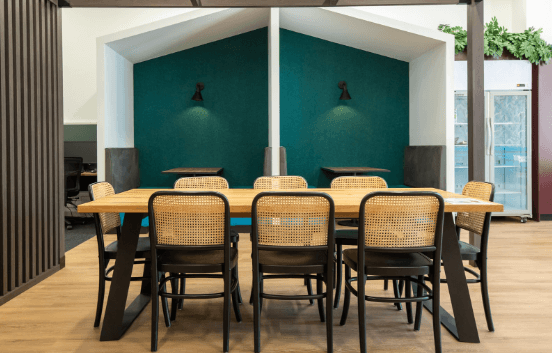Top Mistakes to Avoid When Planning Your Office Fitout

Creating a functional and aesthetically pleasing workspace can be exciting yet challenging. Have you considered how crucial every decision is in this process? What common pitfalls might you face when designing your work environment? This article will explore the top mistakes to avoid when embarking on this transformative journey.
Careful preparation and smart choices are the keys to crafting a workspace’s success. Avoiding common errors that can lead to overspending, delays, or an inefficient layout is essential. The keyword office fitouts should guide the decisions in shaping the perfect environment for productivity and creativity.
Overlooking the Needs of Your Team
One of the most significant things that could be improved is paying attention to your team’s requirements. The workplace should cater to the needs of those using it daily. If employees are not consulted during the design phase, the result may be a space that doesn’t serve its purpose efficiently. Consider aspects like workspace arrangement, privacy, and comfort. Engaging staff members early in the process can provide valuable insights that contribute to a more effective environment.
See also: Bespoke Garden Offices: Elevate Your Home with Custom Solutions
Focusing Solely on Aesthetics
While it’s tempting to prioritise a workspace’s visual appeal, functionality should never take a backseat. A beautifully designed space that doesn’t support day-to-day operations can lead to frustration and decreased productivity. It’s necessary to strike a balance between form and function. Consider how the layout will facilitate workflows and how the design choices will impact the overall experience of those who use the space.
Underestimating the Importance of Future-Proofing
Failing to consider future growth and changes in your business can result in a workspace that quickly becomes outdated or inadequate. It’s essential to anticipate the potential expansion of your team or changes in the way your business operates. Flexible designs, such as modular furniture and adaptable spaces, can help ensure your workspace remains effective as your business evolves. Avoid locking into a design that doesn’t allow for adjustments.
Neglecting Budget Constraints
Budget overruns are a common issue when creating a new workspace. It’s easy to get carried away with high-end materials and cutting-edge technology, but this can lead to financial strain. Careful budgeting and sticking to it are vital to avoid this pitfall. Prioritise spending on areas that will have the most significant impact on productivity and employee satisfaction. Ensure that there is a contingency plan in place for unexpected expenses.
Ignoring the Importance of Lighting
Although lighting is frequently overlooked, it is essential to the comfort and efficiency of a workstation. Low lighting can cause headaches, eye strain, and a low mood. While natural light is usually ideal, if it isn’t accessible, think about combining task, ambient, and accent lighting to create a well-lit space. Proper lighting can increase energy and focus, so it’s critical to the overall design of your space.
Failing to Consider Acoustics
Noise levels can significantly impact concentration and productivity. In open-plan spaces, where noise can be a significant issue, it’s essential to implement strategies to manage sound. Acoustic panels, carpeting, and soft furnishings can help absorb sound, while designated quiet zones can provide spaces for focused work. Overlooking the acoustic environment can lead to a distracting and stressful workspace for employees.
Underestimating the Importance of Ergonomics
Ergonomics is not just a buzzword; it’s a critical component of a healthy work environment. Poorly designed workstations can lead to discomfort, injury, and decreased productivity. Invest in ergonomic furniture that supports good posture and reduces strain. Adjustable chairs, desks, and monitor stands can accommodate different body types and preferences, helping to create a more comfortable and productive environment.
When planning office fitouts, avoid these common mistakes to ensure a smooth and successful project. By considering your team’s needs, balancing aesthetics with functionality, and anticipating future growth, you can create a workspace that enhances productivity and employee well-being. Remember, careful preparation and smart decision-making are the keys to a successful and stress-free transformation of your work environment.





